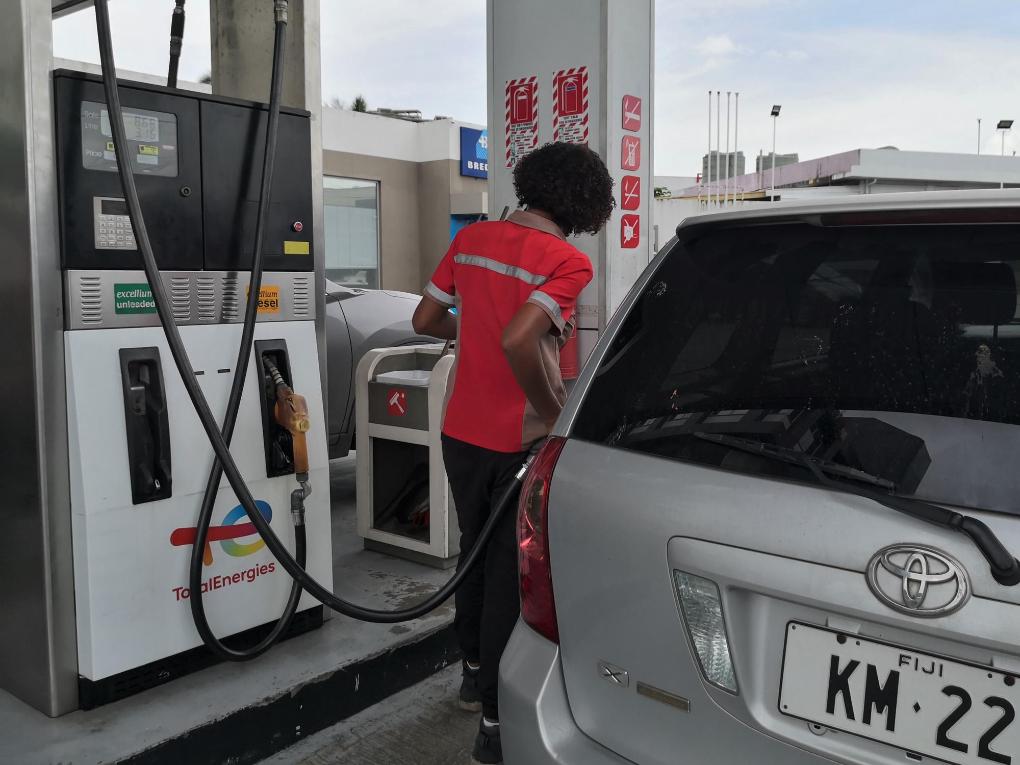
Tranalysis
Xinhua Agency, Suva, October 17 (Reporter Guo Xinhui) In recent years, the governments of Australia and New Zealand have actively promoted labor mobility plans to the Pacific region, attracting a large number of workers from Pacific island countries including Fiji. Although working in "rich neighbors" has indeed significantly increased Fiji's remittance income, the large outflow of labor has further exacerbated the shortage of people in the labor market of this developing country and severely restricted economic development. In addition, social problems such as family breakdown and treatment discrimination caused by the massive outflow of labor cannot be ignored.
On June 7, 2023, teachers and students cleaned up beach garbage in Suva, the capital of Fiji. Published by Xinhua Agency (Photo by Sang Qinlong)
Economic development is affected
In the past two years, Fiji has experienced a large-scale wave of outbound immigrants, with an average of more than 40,000 more immigrants per year than the number of immigrants. This is a trend worthy of vigilance for this Pacific island country with a total population of only about 890,000.
The main driving force behind this mass immigration is the attractive employment and educational opportunities provided by "rich neighbors" Australia and New Zealand. United Nations data shows that Australia and New Zealand are the main destination countries for Fijian citizens to migrate overseas, and Fijian expatriates in these two countries account for more than 60% of the total number of Fijian overseas nationals. Australia and New Zealand relaxed visa requirements during the COVID-19 epidemic to address labor shortages and expanded labor mobility programs for the Pacific, namely the Pacific Australia Labor Mobility (PALM) program and New Zealand's Seasonal Employers (RSE) program. The above-mentioned policies launched by the two countries have opened the door for Fijians, especially young Fijians, to go abroad to seek development.
On September 7, people participated in the Red Flower Festival float parade in Suva, the capital of Fiji. Published by Xinhua Agency (Photo by Sang Qinlong)
However, while Australia and New Zealand have resorted to immigrants from Fiji and other Pacific "poor neighbors" to alleviate their own labor shortages, Fiji is experiencing a severe labor and brain drain. Today, the Fijian government has realized the serious problem and is working hard to solve the impact of labor loss on the country's economic and social development.
Fiji's Deputy Prime Minister and Minister of Finance Prasad said at a parliamentary meeting that from October 2022 to March this year, at least 70,000 Fijian citizens migrated overseas, resulting in a reduction in government tax revenue, economic activities, and consumption power, and an intensification of labor shortages. According to him, at least 10% of Fiji's formal labor force has flowed to Australia and New Zealand, and construction, manufacturing, tourism, agriculture... almost all industries have experienced a large number of brain drain.
On January 30, 2021, a woman (center) purchased supplies at the market in Suva, Fiji. Photo by Xinhua Agency reporter Zhang Yongxing
According to statistics from the Fiji Water Affairs Authority, about 950 water technicians have been lost in the past four years; data from the Fiji Ministry of Health shows that 417 doctors, nurses and allied medical staff resigned in the second half of last year alone and went abroad to develop; data from the Fiji Ministry of Education shows that last year, about 900 teachers applied for short-term overseas study visits, while less than half of the teachers returned home as scheduled...
Kamikamega, Fiji's Deputy Prime Minister and Minister of Foreign Trade Cooperation and Small and Medium Enterprises, said: "As far as the labor market is concerned, we are facing a crisis. This is a reality and a tragedy."

On March 17, 2022, a woman refueled at a gas station in Suva, the capital of Fiji (photographed on mobile phone). Photo by Xinhua Agency reporter Zhang Yongxing
Social problems emerge endlessly
The governments of Australia and New Zealand call the labor mobility plan a "three-win win", that is, workers, labor-exporting countries and labor-importing countries benefit, emphasizing that the relevant plan can bring economic benefits to Pacific Island workers, bring remittance income to their communities and countries, and also provide flexible labor for Australian and New Zealand employers.
However, the governments of Australia and New Zealand have overplayed the so-called "win-win-win situation", and there is little literature and authoritative data showing that these plans have other benefits than economic benefits. On the contrary, Pacific island workers face numerous unfair treatment in labor-importing countries, while labor-exporting countries also face various social problems related to unstable employment.
On June 7, 2023, a primary school student cleaned up beach garbage in Suva, the capital of Fiji. Published by Xinhua Agency (Photo by Sang Qinlong)
Relevant UNICEF reports show that although remittance income from labor mobility plans creates economic benefits, improper management of these funds often leads to insufficient family support and tensions. The report points out that domestic violence, child neglect and abuse among migrant workers in the Pacific have increased. The report also reveals the social costs of labor mobility, including family breakdown, exploitation, social isolation and lack of family care.
Fiji's Minister of Women, Children and social protection Tabua said statistics show that five out of six children in Fiji are victims of domestic abuse or neglect. "Due to labor mobility, there has been a significant increase in the number of children lacking parental or guardian care in Fiji."
Seruwaiya Kabukabu (center) and local women grow mushrooms in Naitashiri Province, Fiji, September 11. Published by Xinhua Agency (Photo by Gao Xin)
Fiji's Minister of Employment, Productivity and Industrial Relations Singh believes that Australia and New Zealand's Pacific labor mobility plans have not only led to a "serious shortage" of professionals in the Fiji labor market, but also caused some social problems. "Unfortunately, labor-importing countries are not helping us in any way."
In June this year, Cristina Leveragi, a Fijian citizen holding a PALM visa, died of illness in Australia. Her relatives in Australia later exposed themselves on social media, accusing the PALM program of being a "modern slavery" full of exploitation, bullying and racism. Levelaghi's death shows serious systemic problems in Australia's immigration and labor systems, with labor being regarded as consumables and with little protection or support measures.
Levelaghi's relatives stressed that Australia must reform its labor visa system to provide real protection for Pacific island workers and ensure that they are treated with dignity.
On July 21, 2020, a Fijian "samurai" greets tourists at the Nanuku Obog Beach Resort near Suva, the capital of Fiji. Photo by Xinhua Agency reporter Zhang Yongxing
Measures to address the symptoms but difficult to cure the root cause
The Fiji government has taken measures to address the severe shortage of people in the country's labor market. A key measure is to increase the retirement age for civil servants from 60 to 62 to retain experienced public sector workers and fill the gap left by young people migrating abroad. In addition, the Fijian government is considering recruiting more foreign workers and implementing policies to encourage expatriates to return home and invest.
However, analysts believe the above measures are only temporary solutions. The labor outflow reflects Fiji's deeper economic and social challenges, such as limited employment prospects and declining wages. To meet this challenge, the Fiji government must implement effective policies to attract talents, provide vocational skills training and development opportunities, and properly control the scale of labor export.
Second, the Fijian government needs to weigh the short-term economic benefits of labor mobility against the social costs it generates. Although the labor mobility plan has brought Fiji certain skills accumulation and remittance income, this benefit is far less than the high social costs incurred, such as direct or indirect damage in the fields of culture, customs, environment, medical care, education, etc.
This is an outdoor swimming pool renovated with Chinese aid and assistance that was photographed in Suva, Fiji on January 12. Published by Xinhua Agency (Photo by Sang Qinlong)
Relevant United Nations reports show that Fiji has become the largest source of labor for Australia's PALM program. As of June this year, there were 6379 Fijian workers entering Australia under the PALM program. Despite this, Fiji does not impose any restrictions on the number of people participating in the ANZ labor mobility plan. Samoa, a South Pacific island country with a similar situation, clearly stipulates that no more than 6000 workers can go to Australia and New Zealand every year.
World Bank data shows that Fiji's remittance income in 2023 is US$560 million, an increase of 20.4% from 2022, accounting for 10.2% of Fiji's GDP. In addition, remittances are less affected by the economic cycle and are a relatively stable source of foreign exchange. The Fijian government has not yet introduced policies to limit the scale of labor export to avoid a direct impact on remittance income.
"As developing countries, no matter what we do, we cannot stop our people from seeking better opportunities, greener pastures, and a better life for their families," Fiji's Minister of Employment, Productivity and Industrial Relations, explained Singh.
